paul von hindenburg
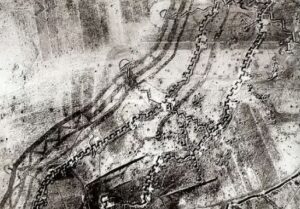
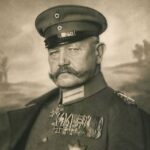 As World War I…the “War to end all Wars,” was coming to a close, there still remained one serious German stronghold that had to be taken down in order to ensure Allied success in winning the war. That stronghold, known to the Allies as the Hindenburg Line, an area they named after the German commander in chief, Paul von Hindenburg, was built in late 1916. The Germans called it the Siegfried Line. Either was, the Hindenburg Line was a heavily fortified zone running several miles behind the active front between the north coast of France and Verdun, near the border of France and Belgium. This area was a must win, must take back line, if the Allies were going to win the war.
As World War I…the “War to end all Wars,” was coming to a close, there still remained one serious German stronghold that had to be taken down in order to ensure Allied success in winning the war. That stronghold, known to the Allies as the Hindenburg Line, an area they named after the German commander in chief, Paul von Hindenburg, was built in late 1916. The Germans called it the Siegfried Line. Either was, the Hindenburg Line was a heavily fortified zone running several miles behind the active front between the north coast of France and Verdun, near the border of France and Belgium. This area was a must win, must take back line, if the Allies were going to win the war.
The German army was working hard to make it very difficult to break through the Hindenburg line by September 1918. At that time, the German line consisted of six defensive lines. The zone formed by these six lines measured some 6,000 yards deep, and it was ribbed with lengths of barbed wire and dotted with concrete emplacements to be used as firing positions. It was a fortress that the Germans were sure would be impenetrable. However, while the Hindenburg Line was heavily fortified, it was not without weakness. Its southern part was most vulnerable to attack, because it included the Saint Quentin Canal, and the entire area was not totally out of sight of artillery observation by the enemy. Any attack by the Allies would need to come through this weakness. Another weakness was that the whole system was laid out linearly, as opposed to newer constructions that had adapted to more recent developments in firepower and were built with scattered “strong points” laid out like a checkerboard to enhance the intensity of artillery fire. These things would be the saving grace for the Allies, and the downfall for the Germans.
Knowing these vulnerabilities, the Allies began to concentrate all the force built up during their so-called “Hundred Days Offensive,” to their advantage. The operation kicked off on August 8, 1918, and by late September, the Allies had gained a decisive victory at Amiens, France, against the Hindenburg Line. Australian, British, French, and American forces participated in the attack on the Hindenburg Line. The attack began with a huge bombardment, using 1,637 guns along a 10,000-yard-long front. The final 24 hours of the offensive saw the British firing a record 945,052 shells. After capturing the Saint Quentin Canal with a creeping barrage of fire…126 shells for each 500 yards of German trench over an eight-hour period, the Allies successfully breached the Hindenburg Line on September 29, 1918.
The attack was pushed forward by Australian and United States troops, who, out of a must-win sense of urgency, attacked the heavily fortified town of Bellicourt with tanks and aircraft. The battle raged on for four days, with heavy losses on both sides. Finally, the Germans were forced to retreat. With Kaiser Wilhelm II 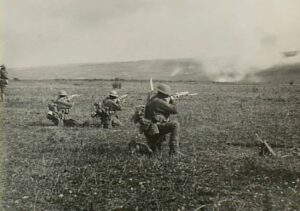
 pressured by the military into accepting governmental reform and Germany’s ally, Bulgaria, suing for an armistice by the end of September, the Central Powers were in disarray on the battlefield, as well as the home front. The Allies continued to press their advantage on the Western Front throughout the month of October, and against their predictions, World War I came to an almost abrupt end on November 11, 1918.
pressured by the military into accepting governmental reform and Germany’s ally, Bulgaria, suing for an armistice by the end of September, the Central Powers were in disarray on the battlefield, as well as the home front. The Allies continued to press their advantage on the Western Front throughout the month of October, and against their predictions, World War I came to an almost abrupt end on November 11, 1918.
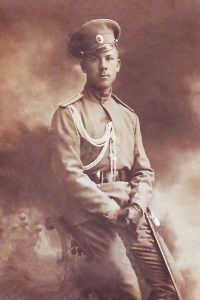
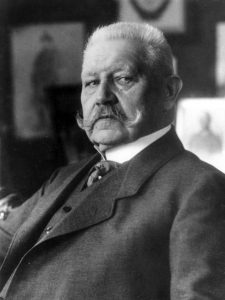 In what might today be considered almost post-apocalyptic, the Battle of the Osowiec Fortress, was nevertheless fought during World War I. The year was 1915, and World War I was in full swing. It was also an era of innovation in weaponry, and many were the never-before-seen weapons of warfare, as well as new and never-before-heard-of tactics.
In what might today be considered almost post-apocalyptic, the Battle of the Osowiec Fortress, was nevertheless fought during World War I. The year was 1915, and World War I was in full swing. It was also an era of innovation in weaponry, and many were the never-before-seen weapons of warfare, as well as new and never-before-heard-of tactics.
The Germans had launched a full frontal attack on the Russian Osowiec Fortress, located in present-day Poland, at the beginning of July. Included in the attack were 14 battalions of infantry, one battalion of sappers, 24–30 heavy siege guns, and 30 batteries of artillery equipped with poison gasses led by Field Marshal Paul von Hindenburg. Russian defenses were manned by 500 soldiers of the 226th Infantry Regiment Zemlyansky, and 400 militia. The Russians were quite outnumbered.
On August 6, 1915, the German forces employed chemical weapons on the Russians. At 4am, after waiting for favorable wind conditions, the German attack began with regular artillery bombardment combined with chlorine gas. As the scene was described, “The gas caused the grass to turn black and leaves to turn yellow, and the dead birds, frogs, and other animals and insects were lying everywhere. Terrain looked like Hell.” The Russians soldiers either had no gas masks, or had only poorly made ones, and most soldiers used their undershirts as masks, with many soaking them in water or urine to help with their effectiveness at holding the gas at bay. I think most of us have heard of the horrors caused by the use of chemical warfare, and most people are vehemently opposed to such atrocity, because of the effects, which if not instantly deadly, can cause the victim to slowly die over a number of years, fraught with lingering health problems. Most of the Russian soldiers died immediately, but some survived the gas attack. Sub-Lieutenant Vladimir Kotlinsky, the highest ranking Russian soldier to survive the initial attack, rallied the other surviving soldiers. They decided to charge the advancing German lines…what choice did they really have.
Over twelve battalions of the 11th Landwehr Division, making up more than 7000 men, advanced after the bombardment expecting little resistance. They were met at the first defense line by a counter-charge made up of the surviving soldiers of the 13th Company of the 226th Infantry Regiment. The invading German forces were horrified when they saw what appeared to be zombie-like soldiers. The panic began when they first caught sight of the Russians, who were coughing up blood and bits of their own lungs, as the hydrochloric acid formed by the mix of the chlorine gas and the moisture in their lungs had begun to dissolve their flesh. The Russian men were covered in blisters and coughing up their own respiratory organs, the Germans were subsequently retreating. The Russian garrison suffered heavy losses, but some soldiers survived even after the final charge, and Chlorine gas barrage. The Germans had retreated so fast that they got caught up in their own c-wire traps. The five remaining Russian guns subsequently opened fire on the fleeing Germans. Kotlinsky died later that evening. The Russian soldiers had basically fought their last battle as they were dying…hence the name given to the battle…The Attack of the Dead Men.
The dying Russians could not hold the area for much longer, of course. The soldiers there were sick, dying, or already dead. The Germans threatened to encircle the fortress with the capture of Kaunas and Novogeorgiesk. Knowing their fort was lost, the Russians demolished much of the fortress and withdrew on August 18th. While 
 the German casualties were moderate to heavy, they were not nearly as bad as the Russian casualties of about 800 of the 900 men that were deployed at the fort. This story, although virtually unknown to the outside world, is a symbol of Russian military power and courage under fire. The story of this battle is commonly told and taught in Russian history classes.
the German casualties were moderate to heavy, they were not nearly as bad as the Russian casualties of about 800 of the 900 men that were deployed at the fort. This story, although virtually unknown to the outside world, is a symbol of Russian military power and courage under fire. The story of this battle is commonly told and taught in Russian history classes.

